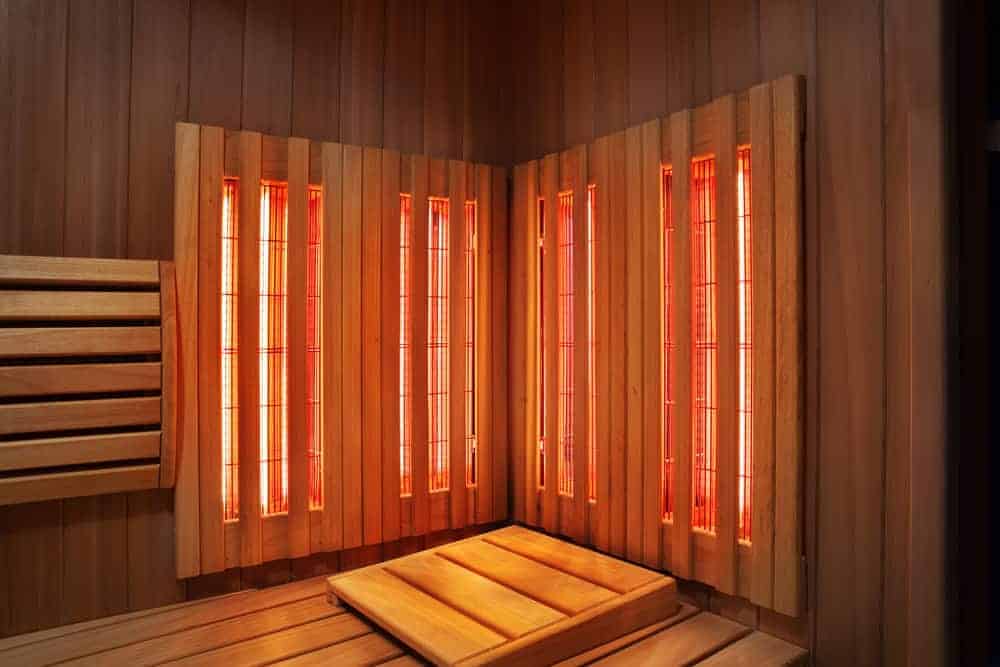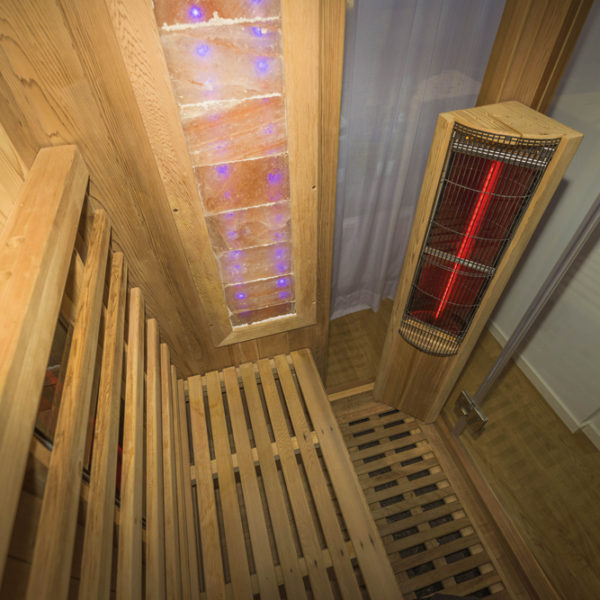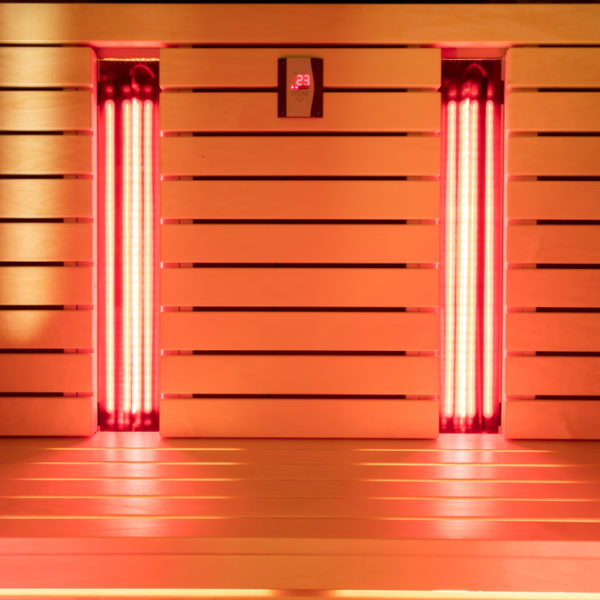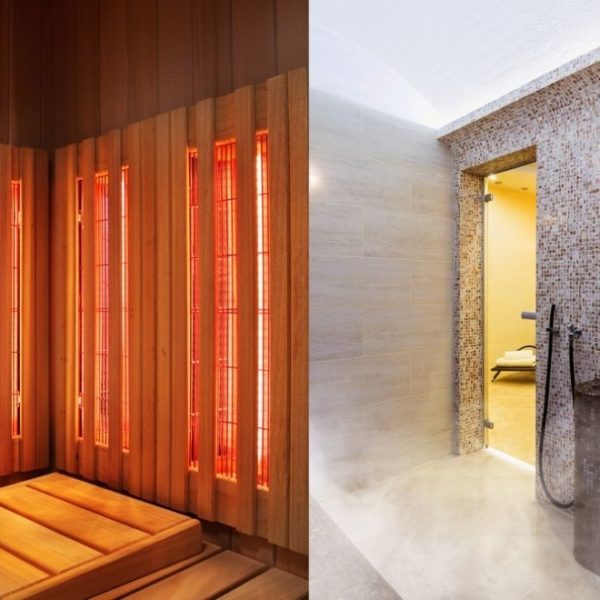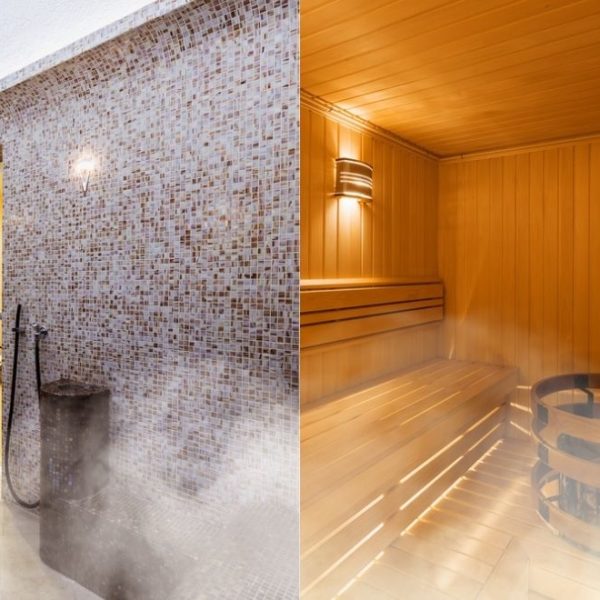Are you ready to learn about the effects of infrared light on the skin?
If you think back to your school days, you probably remember hearing about the electromagnetic spectrum. This spectrum is a range of energy that expands as it leaves its source; we explicitly refer to solar radiation for this article.
As we turn our focus on the energy that our sun emits, please recognize that infrared light is not visible to the human eye, but rather light energy that we “can detect as heat.”
Read on to learn how infrared light has targeted benefits for your skin, ranging from cosmetic issues to more chronic conditions.
Effects of Infrared Light on Skin: Dangerous or Safe?
The Technology Behind Infrared
To say that the sun is critical to the human condition would be an understatement- we would cease to exist in the absence of the sun’s warmth.
Science has further harnessed this life-giving source to heal, manage, and even treat many emotional, mental, and physical disorders. The bottom line is that the sun is a physiological phenomenon.
But even beyond the umbrella of medical benefits that we will discuss next, infrared light has been vital to various industries, including the industrial, military, commercial, and scientific sectors.
Oh, Mr. Sun, Sun- Please Shine Down On Me!
Some of the greatest minds ever known have studied and developed the benefits of daily exposure to the sun. The World Health Organization recommends people to receive “5 to 15 minutes of casual sun exposure of hands, face and arms two to three times a week.”
Regulations and standards typically set the bar at a minimum level of quality or attainment, so one can rightly assume that those standards have room for improvement, as with your exposure to the sun.
Have you ever spent a hot summer day at the beach or pool? Your body has this fascinating way of communicating its needs to you, but you have to be willing to listen.
So you are at the beach or pool, laying out on your towel, soaking up some sun, and enjoying your favorite tunes. Then, suddenly, you feel this need to take a break and go for a swim. That is your body’s way of letting you know that it needs a break from the sun.
While this may be far from science, it is your body communicating danger, and so it searches for protection and survival. Overexposure to sunlight can affect different people in various ways and for other reasons.
As many of you will be able to resonate with the similar beach or pool experience, I am sure you will likely also share the sentiment of experiencing a certain snuggly feeling that takes over when warmth caresses your body.
While this is all good theoretically, let’s get down to business, discussing the specific benefits that infrared light has on your skin. A significant advantage of infrared light within the clinical realm is its pain and invasive-free approach.
What Range Is Most Beneficial to Skin
The infrared region of the electromagnetic spectrum consists of three distinct ranges- near-, mid-, and far-infrared. Therapeutically speaking, the entire infrared spectrum is valuable; however, specific wavelengths are better suited for treating or managing a particular condition.
The wavelengths of infrared rays lie between 700 and 100,000 nanometers- quite an expansive range. The earliest infrared saunas used far-infrared, which is typically between 3000 and 100,000 nanometers. Although still beneficial, the penetrating factor is decreased to approximately 0.1 mm beneath the skin and is best suited for topical therapies.
As studies and research developed through the years, scientists revealed that near-infrared, ranging between 700 and 1,400 nanometers, delivers far-deeper penetrating benefits to the human body.
Currently, the common belief in the research community indicates the specific infrared region between 810 and 830 nanometers has direct effects on ATP production.
ATP is a carrier for synthesized energy housed within the mitochondria of our cells. The effects of this range penetrate even deeper below the skin, which promotes wound healing and other regenerative properties.
Because “all humans produce infrared, it’s safe, natural and easily absorbed by our tissues.” We could say then that people worldwide have taken advantage of the substantial health benefits associated with infrared since the beginning of our time here on Mother Earth.
Benefits Effects of Infrared Light on Skin
Interestingly enough, both red light therapy and infrared saunas are forms of light energy. However, each of these forms affects the body differently; most notably is the heat factor.
With saunas, heat is inevitable, whereas red light therapy produces almost no heat. Typically, an infrared sauna emits “light therapy through far-infrared heaters, lamps (that use electromagnetic radiation), or bulbs.”
1. Red Light Therapy
Clinical spas typically administer red light therapy for cosmetic treatments as it harnesses wavelengths in the 630-700 nanometer range. Today, red light devices for personal use are available for purchase.
In my opinion, non-prescription personal medical devices that flood the consumer stream should raise a red flag. So often, people who supplement their cosmetic treatments at home are not field specialists and tend to overuse their product in the hopes of gaining faster results.
Another significant danger of quick-purchase medical products is that they may or may not meet industry standards or lack the safety features of professional systems.
As is more often the case with red light therapy compared to infrared saunas (which we will discuss next), the personal devices readily available
have not undergone the same rigorous trial testing that a professional device designed for spa or clinical offices has received.
In addition, many of these devices do not have any official governing approval. In many cases, personal products may be FDA cleared but not approved.
Aestheticians and medical doctors alike utilize red light therapy for a multitude of uses. In essence, low levels of near-infrared light target specific areas of your skin, penetrating deeply for cellular absorption.
If you are searching your local area for a clinic or day spa that offers red light therapy, remember you may discover a practitioner’s venue under a different name:
- Low-Level Light Therapy
- Light-Activated Biostimulation
- Phototherapy
- LED (Light Emitting Diode) Therapy
- Photobiomodulation
Aside from the broad range of terms for red light therapy, the benefits for your skin are the same. The science behind this technology is its success at reaching compromised cells and providing the energy stimulation required to enhance cellular performance, thereby promoting faster healing and other rejuvenating properties.
Here is a brief list of red light therapy uses for your skin:
- promotes healing and management of acne breakouts
- provides chronic and acute pain-management
- promotes faster wound healing
- stimulates hair growth in people with alopecia
- relieves pain from carpal tunnel syndrome & arthritis
- promotes more rapid healing of diabetic foot ulcers
- lowers inflammation, thus soothing psoriasis
- treats lines, wrinkles, stretch marks, and sunspots
- reduces recurring cold sores from herpes virus
- softens scar tissue formation/appearance
- provides muscle & joint recovery after physical activity
- reduces itching from eczema
You will notice that infrared saunas mimic several of the benefits associated with red light therapy; however, you will see that the addition of heat penetrates your skin differently.
2. Infrared Saunas
So how much heat are we talking about? Well, infrared saunas operate between 110 and 140 degrees Fahrenheit (significantly lower than other heat therapy options), directing heat straight into the targeted source-your body.
Widely known for promoting an overall sense of well-being, infrared sauna sessions can be advantageous to health. In addition, one thing that I have learned along my fitness journey is that sweat is highly underrated. While it can leave those salty residue marks on your clothes, it is doing a whole lot more.
Because of the sweat factor attached to sauna use, people seem to enjoy some of the benefits of exercise without actually performing it.
We will cover the whole range of perks associated with infrared light in the following section, but here are some science-backed skin benefits:
- Better circulation causes more oxygen to reach the skin, stimulating collagen production, improving skin tone, and reducing wrinkles.
- Sweating promotes detoxification as our skin releases accumulated toxins circulating throughout our bodies.
- Reduces inflammation, thus decreasing friction between joints which as a result reduces chronic pain experienced by patients.
- A NASA study that significantly popularized the infrared sauna industry found infrared targets the mitochondria of our cells (the powerhouse) which stimulates ATP. The energy transferred to energy-consuming functions such as tissue growth and cell regeneration has shown significantly faster healing in patients.
- The antimicrobial properties associated with sweat limit the overgrowth of the bacteria known as propionibacterium acnes, which can help manage or even treat acne breakouts.
- Infrared heat helps deliver nutrients to the skin by improving circulation. In the process, it releases toxins and removes dead skin cells, which studies have shown to soothe psoriasis.
I think I should also tell you about the possibility of purchasing a sauna blanket – perhaps one of the industry’s most celebrated products that are moderately priced and enjoyed by people worldwide.
Ray sauna is an industry leader in the infrared sector. When you visit our website, you will notice we offer various designs to include a full-size infrared sauna enclosure with chromotherapy lights and an upgraded entertainment system.
Ray sauna also offers the sauna blanket and all-new facial mask option to reap the benefits associated with our great big sun.
If you have the financial means to do so, you can potentially add an infrared sauna to your home. While that may be far-fetched for some, including myself, remember that you can still enjoy the benefits by seeking out your local day spa or wellness center.
If you think the skin benefits from red light therapy or infrared sauna use are impressive, you will be fascinated with all the additional perks of light therapy.
What Else Can Infrared Light Do For You?
In addition to the skin benefits associated with infrared light, you will also enjoy:
- mindfulness and relaxation
- toxin release and sweat gland activation
- stress and anxiety relief
- pain and joint relief
- inflammation decrease
- weight loss
- metabolism rate increase
- detoxification
- skin quality optimization
- blood circulation improvement
- blood pressure regulation
The odds are definitely in your favor should you choose to embark on an infrared sauna journey. With research-backed benefits, the adverse side effects are practically non-existent.
With that said, I recommend that you follow these tips and guidelines to make the most out of your experience:
- plan multiple shorter sessions at the infrared sauna throughout the week
- utilize hydration breaks during your spa visit
- take a shower before and after your light therapy treatment
- if you are a woman, remove all make-up and cosmetics before your service
- remove all jewelry and wear proper clothing/ accessories
With that said, you should diminish the relatively short list of short-term effects that include heat discomfort, dehydration, airway dryness, headaches, skin redness or tightness, and even skin burn.
These adverse effects are most commonly the result of individual malpractice (not following posted safety tips and warnings) or selecting a less reputable spa/clinic whose practitioners have little to no experience.
Before you decide to experience red light therapy or the infrared sauna, be sure to understand your skin type and seek clearance from your clinical specialist.
As in most cases, the young, the elderly, the pregnant, those with chronic illnesses, or those that take certain medications may be more at risk than otherwise healthy individuals, so receiving that medical go-for-it is critical.
In conclusion, light therapy will help heal and rejuvenate skin, muscles, tissues, and joints. In addition, infrared light positively affects your physiological being- your rebirth will leave you feeling smoother, milder, and more relaxed.
Conclusion
If you have been searching for a non-invasive approach for healing or treating a specific skin condition, the time has come for you to ask your specialist about the possibilities of light therapy.
Remember, you may also pursue light therapy for various other reasons; some are related to skin, and others penetrate even more profound than skin level.
It is also possible that you dearly want to Relax!
Please comment below with questions and concerns regarding the effects of infrared light on the skin.
